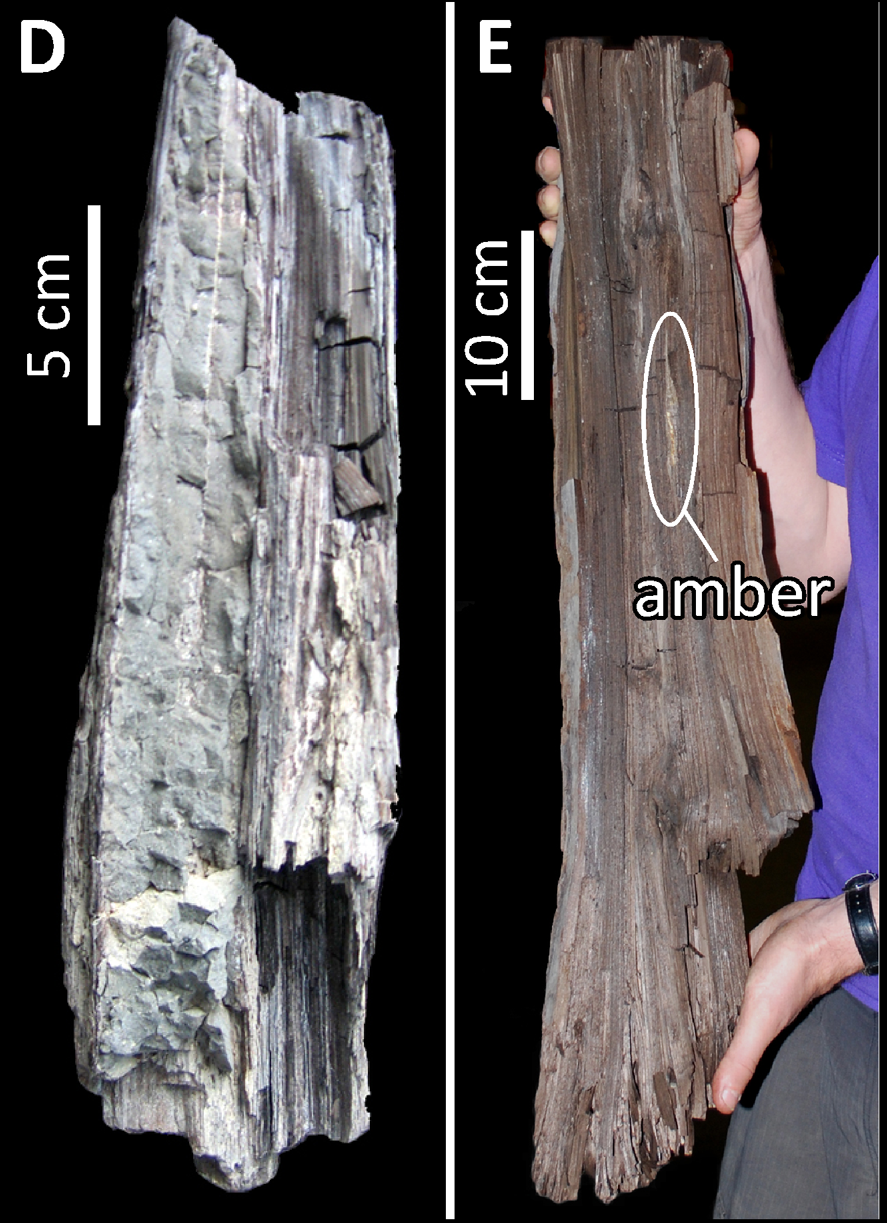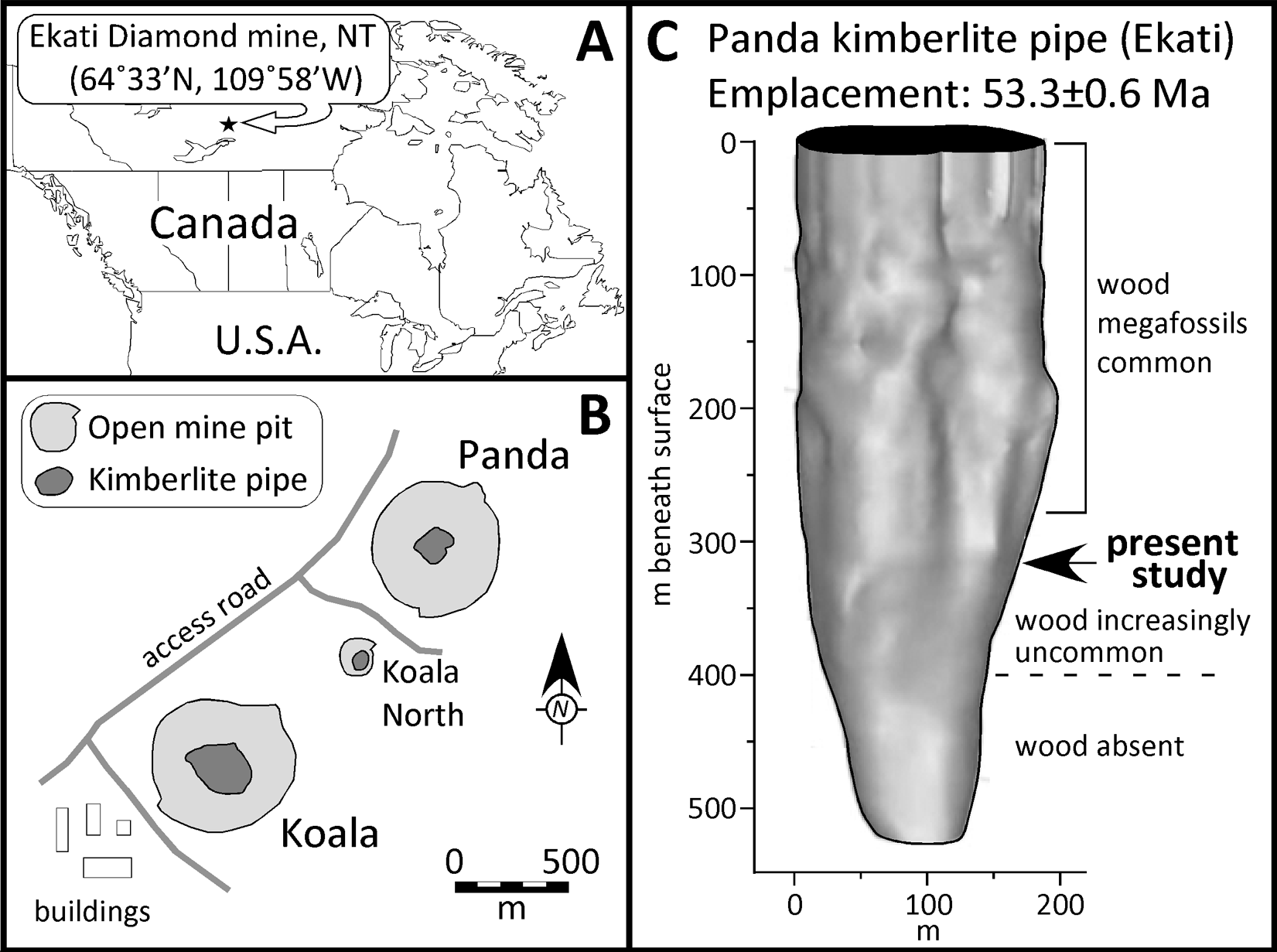50-Million-Year-Old Redwood Chunk Found in Diamond Mine

A search for diamonds in Canada's far north turned up a rare fossil — a chunk of a redwood sealed in volcanic rock more than 50 million years ago.
A study of the well-preserved specimen, which also contains a sliver of amber, shows that the now-icy region where it was found had a swampier past.
The wood was found a few years ago in a kimberlite pipe, named the Panda pipe, over 1,000 feet (315 meters) below Earth's surface at the Ekati diamond mine, just south of the Arctic Circle in Canada's Northwest Territories, the researchers say. A kimberlite pipe, a type of volcanic pipe, forms when kimberlite magma pushes through deep fractures in the Earth's crust to create a vertical tubelike structure that's wider at the top like a carrot. Kimberlites have the deepest origins of all magmas on Earth and when they cool, they leave behind rocks dense in crystals, sometimes holding diamonds.
The researchers, who report their findings in a Sept. 19 paper in the journal PLoS ONE, say the site of the Panda pipe was covered with a forest of Metasequoia, similar to today's dawn redwoods, during the early Eocene. The kimberlite eruption that occurred there about 53.3 million years ago opened a hole in the Earth's surface, sucking in some of those redwoods. Lead author of the study Alex Wolfe of the University of Alberta explained that open space along the side of this hole allowed the trees to tumble far inside. "Then it cooled, and the wood was locked in the volcanic rock," Wolfe told LiveScience in an email.
The specimen may be the oldest of its kind found in the region, surpassing wood from the Axel Heiberg fossil forest in northern Canada by millions of years. Wolfe said that for its age, it is by far the best preserved, which is important in a region where glaciers have scraped other traces of prehistory off the map.

"All sedimentary rocks and their fossils have been wiped clear by glaciation in this part of the world," Wolfe said. "Thus we have, deeply buried in these rocks, vestiges of ancient ecosystems and a sole source of fossils pertaining to the character of Eocene forests in subarctic Canada."
Since the fossil is in such good condition, it gives scientists a better picture of the region's climate in the early Eocene. By measuring the ratio of oxygen and hydrogen isotopes (atoms of the same element with different numbers of neutrons) in the wood's well-preserved cellulose, the researchers found that western Canadian subarctic temperatures were 21 to 30 degrees F (12 to 17 degrees C) warmer and four times wetter than they are today.
Sign up for the Live Science daily newsletter now
Get the world’s most fascinating discoveries delivered straight to your inbox.
Follow LiveScience on Twitter @livescience. We're also on Facebook & Google+.










